25 Brilliant Ways to Master Transitional Living Room Design
You’re about to discover the secret to creating a living room that perfectly balances timeless elegance with modern comfort.
Transitional design gives you the best of both worlds – the warmth of traditional style mixed with the clean sophistication of contemporary aesthetics.
These 25 inspiring ideas will help you transform your space into something truly special that feels both classic and current.
01. Start With Cool Gray Foundations
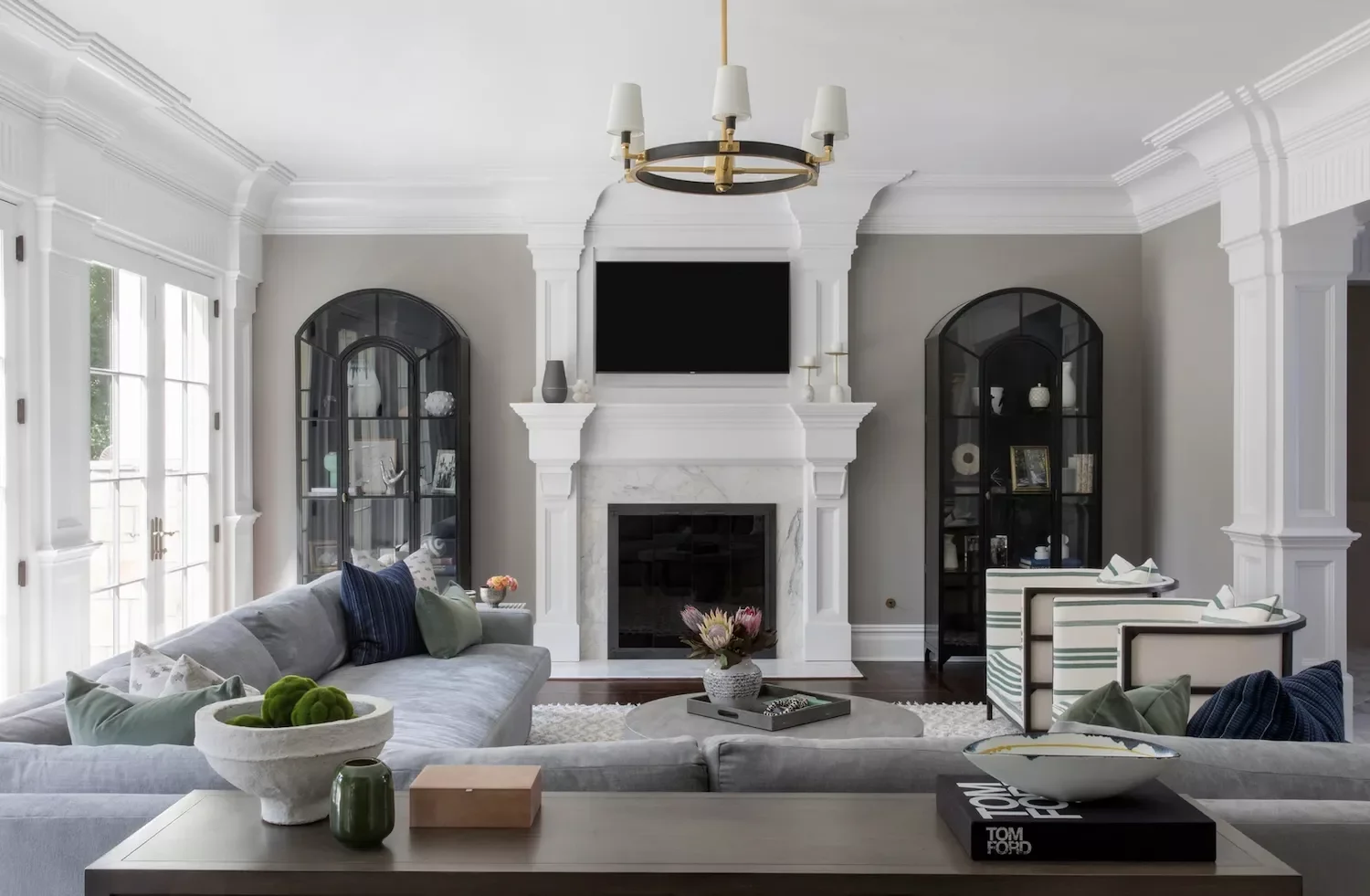
Credit: Britt Design Studio
70K+ People Bought this $29 game-changer Last Month (The Reviews Are Insane)
You’ll love how cool gray walls create the perfect backdrop for your transitional living room.
Pair these sophisticated tones with crisp white trim to add architectural interest. Consider replacing traditional built-ins with elegant arched display cases for a fresh twist on classic storage solutions.
02. Warm Things Up With Rich Beige Tones
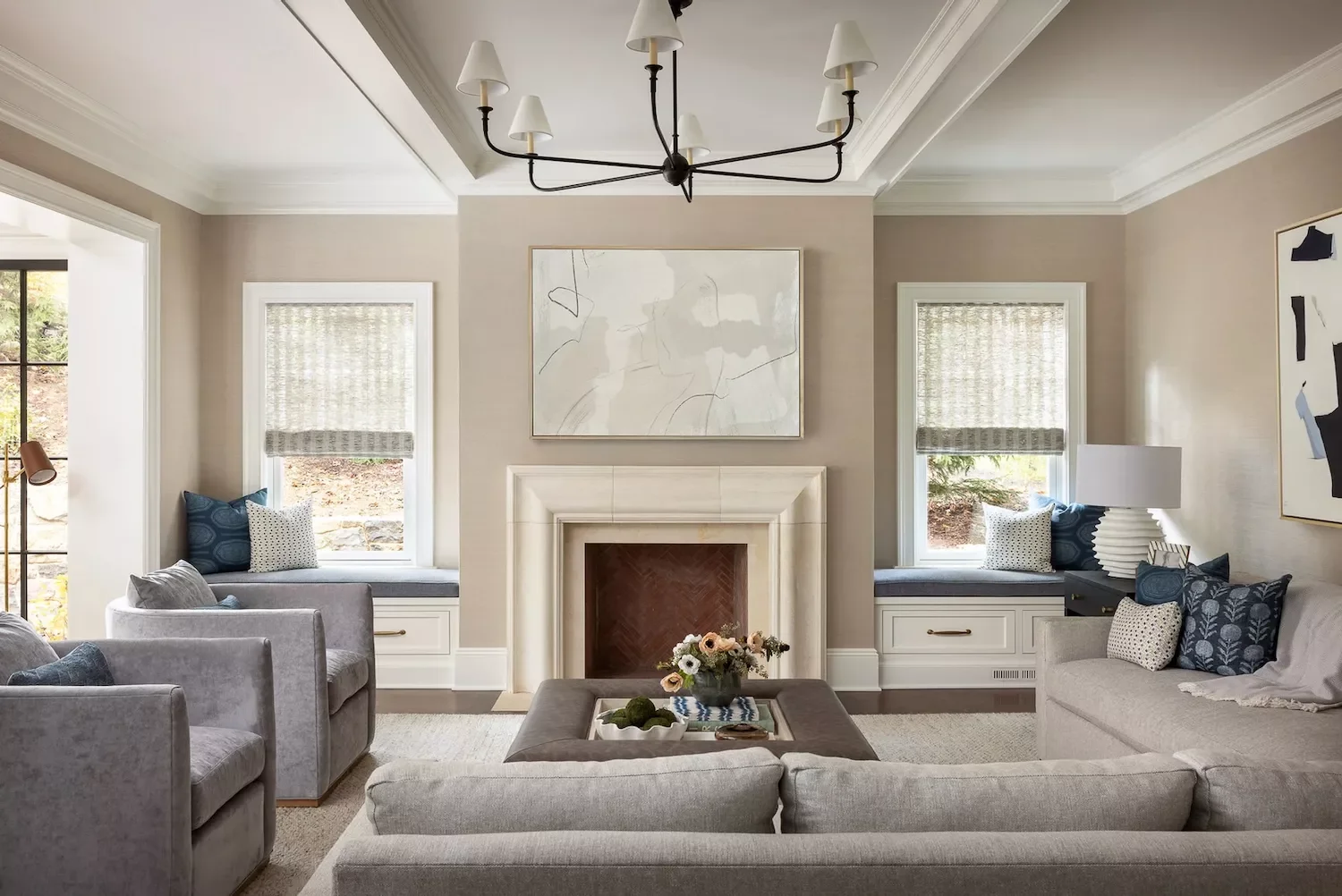
Credit: Britt Design Studio
Beige walls instantly make your living room feel more inviting and cozy than stark whites.
You can balance these warm undertones with creamy trim and navy blue accents. This combination creates a sophisticated neutral palette that works beautifully in both formal and casual settings.
03. Layer Different Textures for Visual Interest
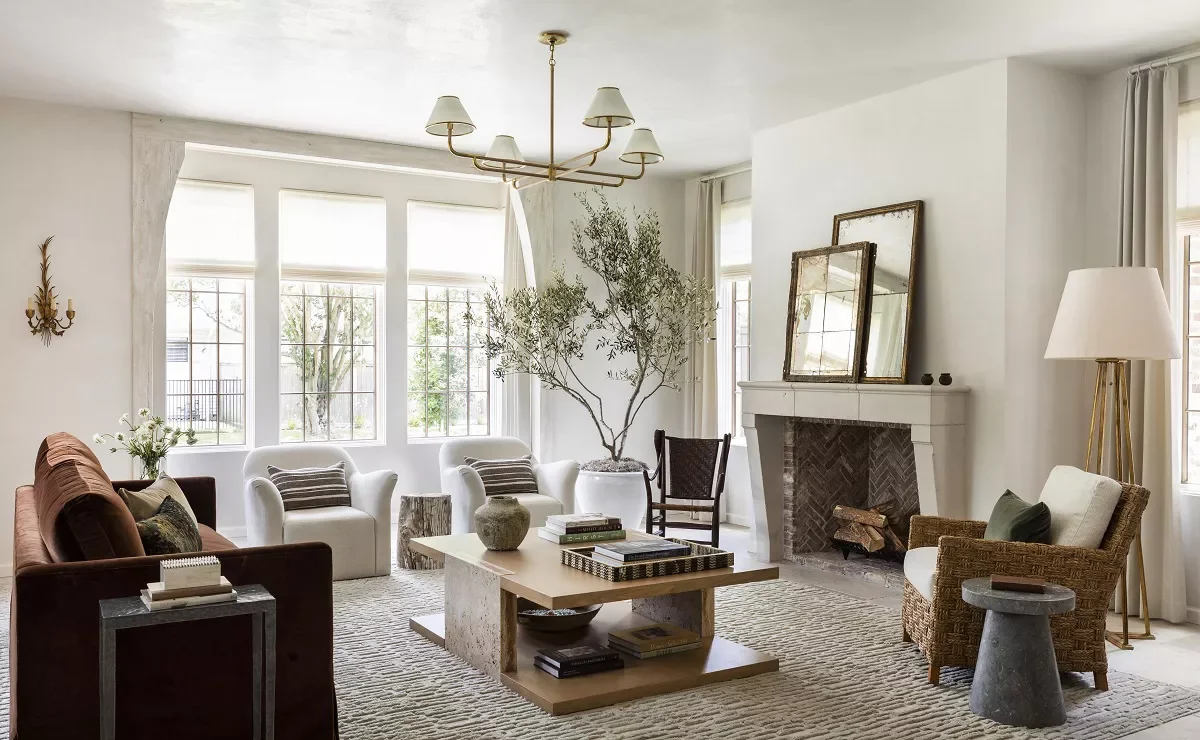
Credit: Design by Marie Flanigan Interiors / Photo by Julie Soefer
Your space will come alive when you mix multiple textures throughout the room.
Try combining plush velvet cushions with natural stone surfaces, warm wood finishes, and woven rattan pieces. Don’t forget a dimensional area rug to tie everything together beautifully.
04. Make a Statement With Eye-Catching Lighting
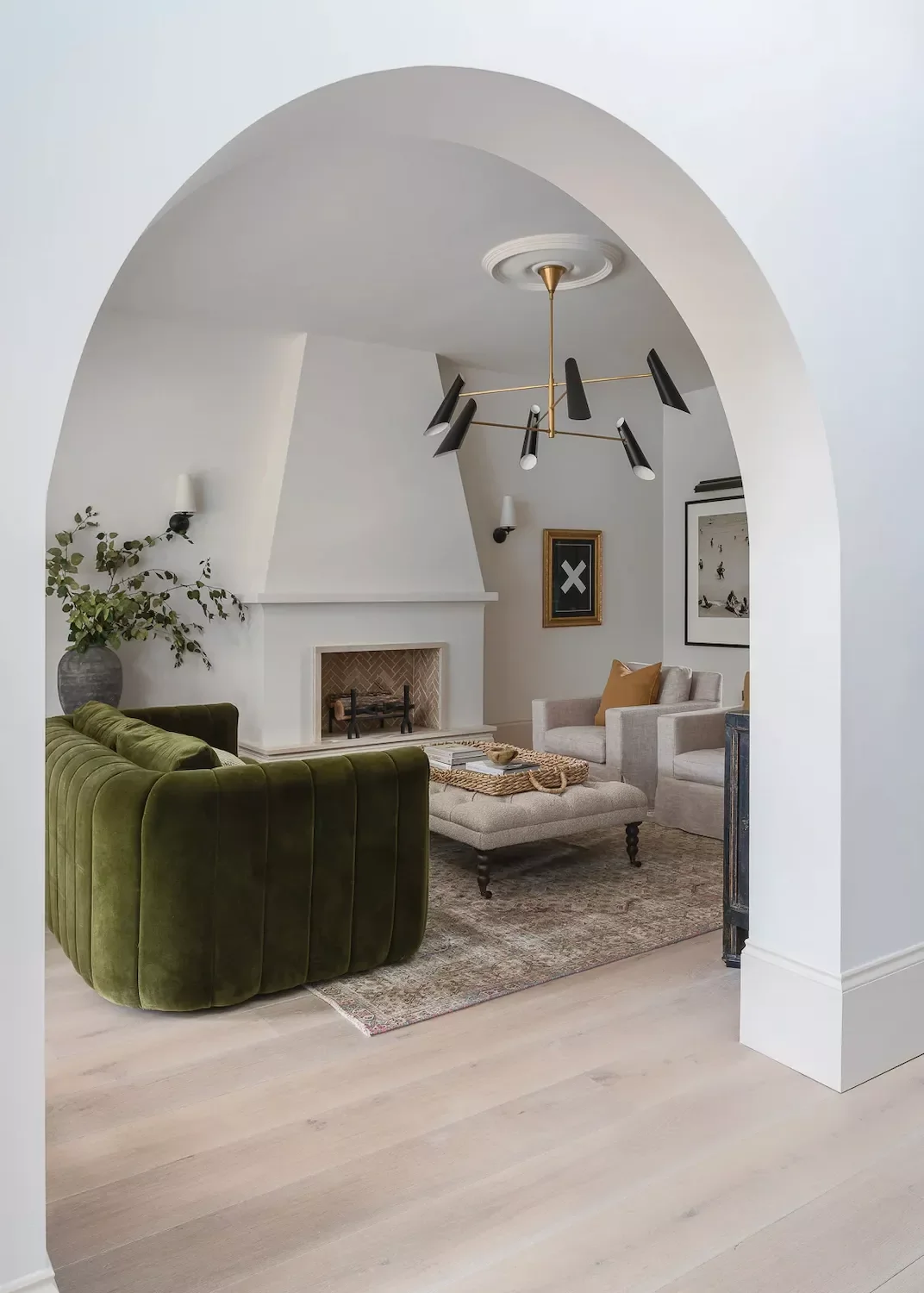
Credit: House 9 Interiors
You can transform your entire room with one stunning light fixture that doubles as artwork.
Choose between sleek modern chandeliers or vintage-inspired pieces depending on your personal style. Statement lighting becomes an instant conversation starter while providing essential ambient illumination for your space.
05. Incorporate Gentle Curves for Sophistication
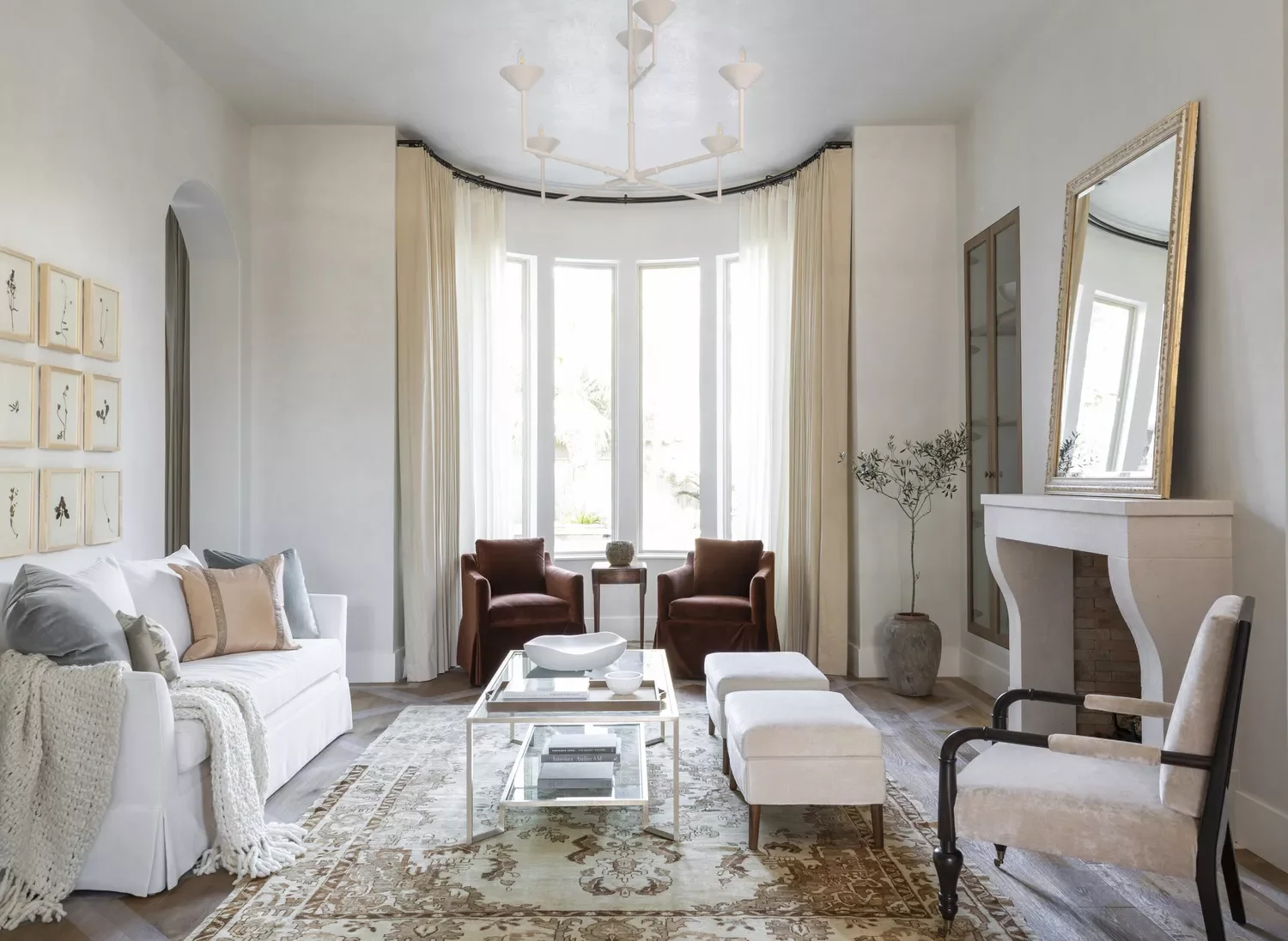
Credit: Design by Marie Flanigan Interiors / Photo by Julie Soefer
Curved furniture pieces bring an elegant softness that makes your living room feel more refined.
Look for sofas with gentle rounded arms that aren’t too ornate or angular. These transitional pieces offer generous proportions and comfortable seating while maintaining that timeless, sophisticated appeal you’re after.
06. Select Understated Artwork That Complements
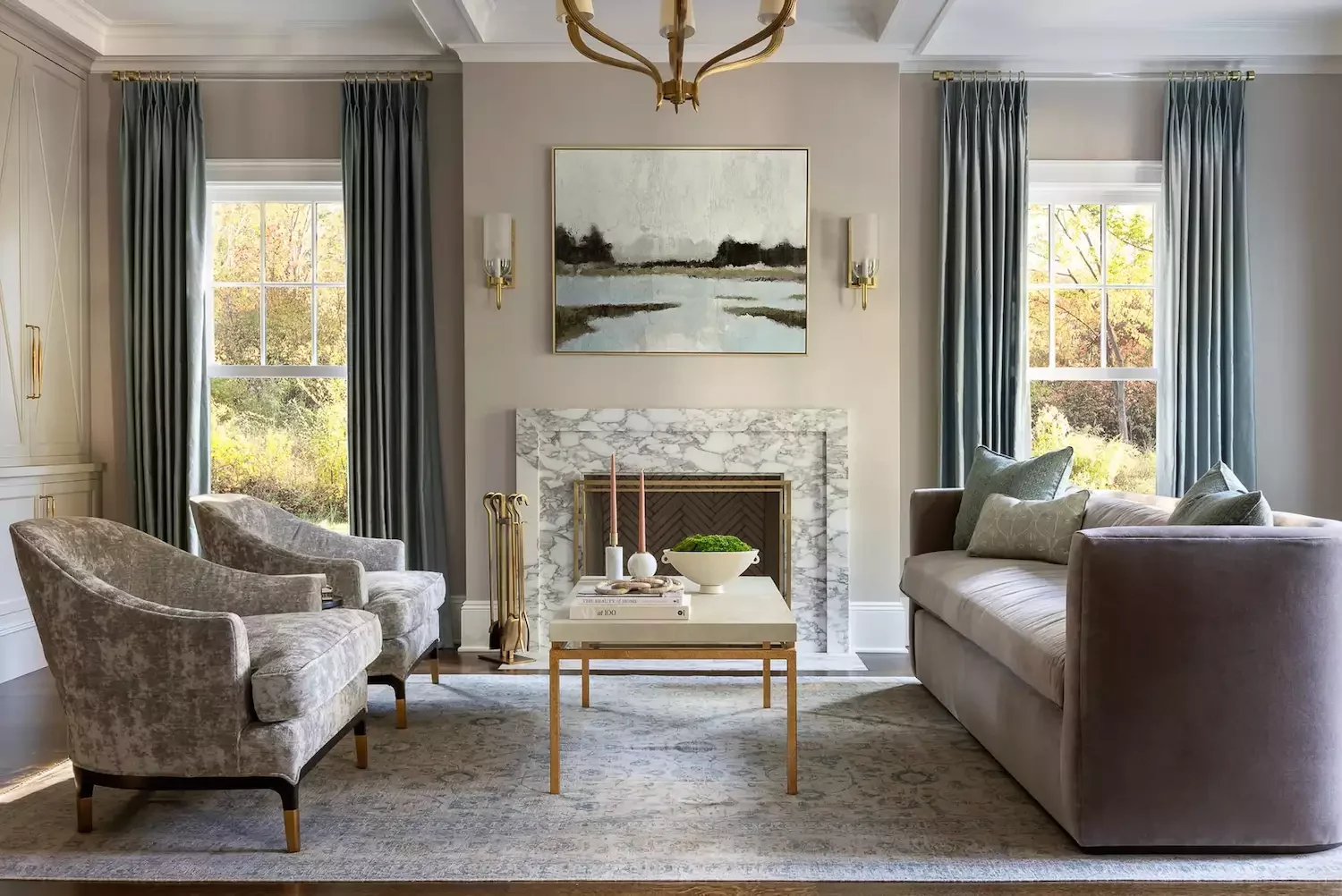
Credit: Britt Design Studio
Your artwork should enhance the room’s tranquil atmosphere rather than compete for attention.
Choose landscape paintings or abstract pieces in muted purples and soft blues. These subtle color hints add visual interest while seamlessly blending with your overall neutral color scheme.
07. Add Character With Architectural Elements
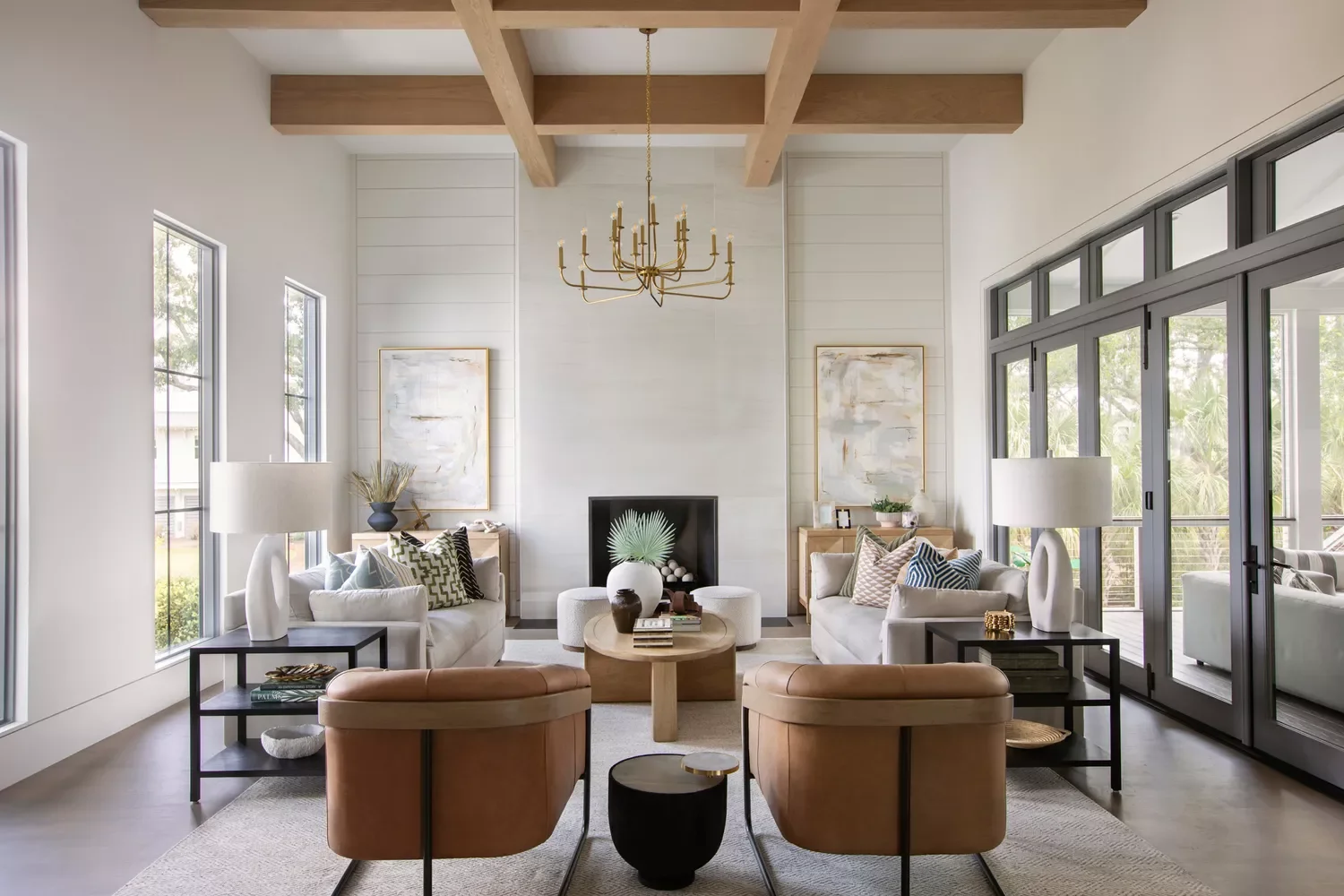
Credit: Margaret Wright Interior & Lifestyle Photographer
You can instantly elevate your space by incorporating classic architectural details during your renovation.
Consider adding shiplap accent walls or modern coffered ceilings with warm wood beams. These elements nod to traditional design while keeping the overall feel fresh and contemporary.
08. Maximize Light With Floor-to-Ceiling Curtains
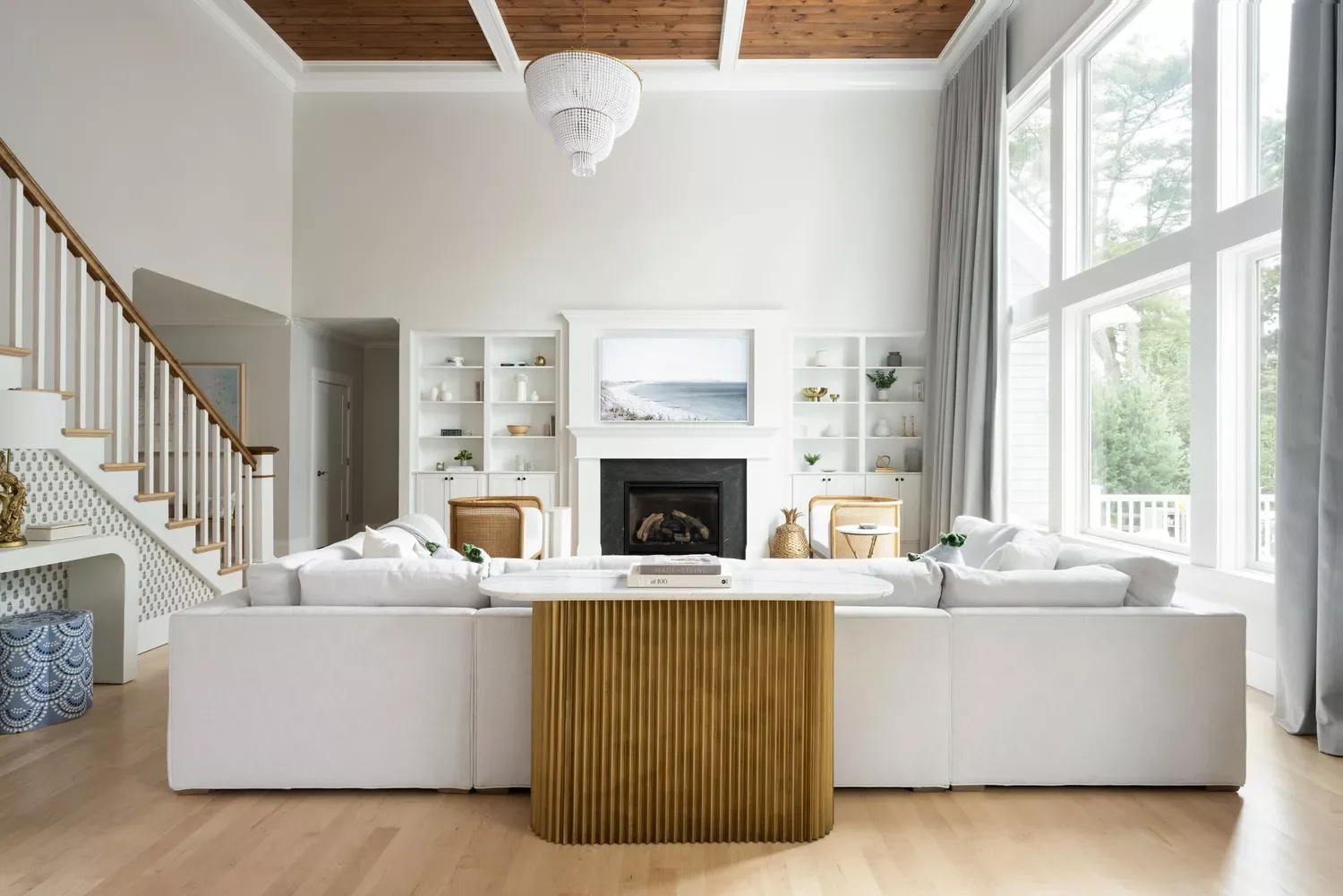
Credit: Desiree Burns Interiors
Your windows will look dramatically larger when you hang curtains from ceiling to floor.
Choose soft gray or neutral fabrics that gently filter natural light without blocking it completely. This trick works especially well in rooms with high ceilings or large window walls.
09. Modernize Classic Furniture Silhouettes
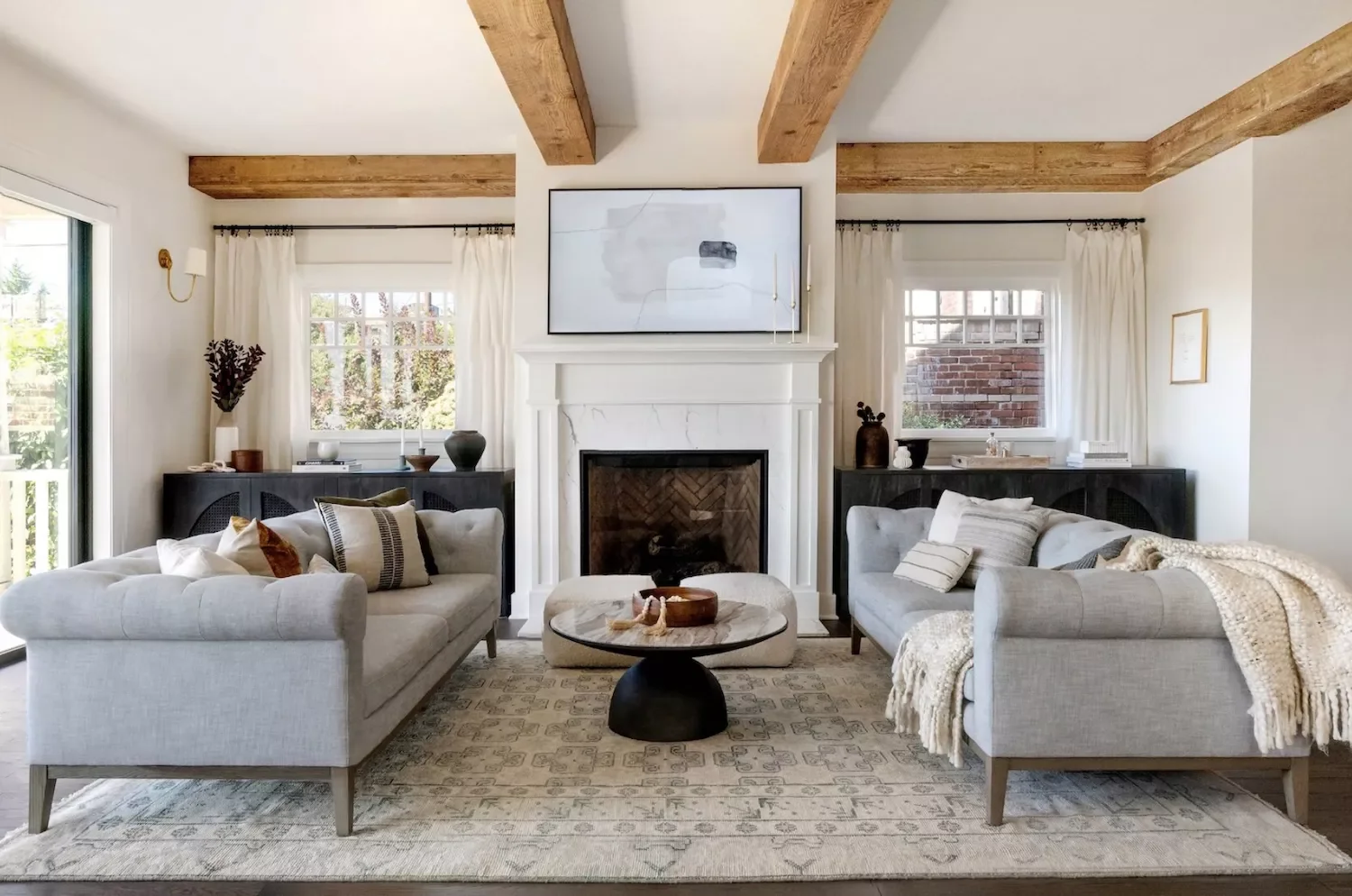
Credit: Jessica Nelson Design / Carina Skrobecki Photography
You’ll get the best results by choosing furniture that updates traditional forms for today’s lifestyle.
Look for Chesterfield-style sofas in neutral fabrics with slender legs that lighten the overall appearance. These pieces offer modern comfort while maintaining those classic proportions you love.
10. Simplify Your Fireplace Design
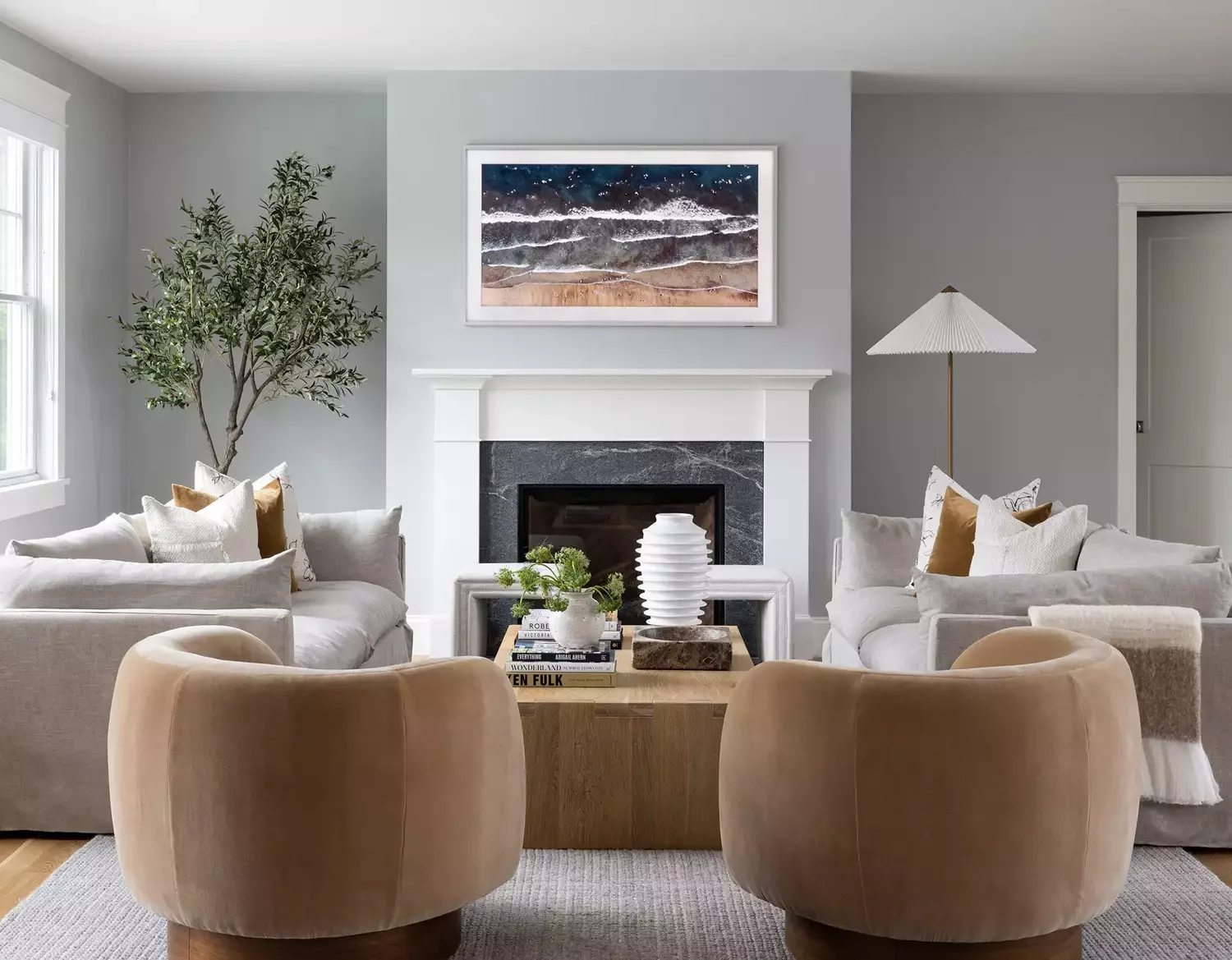
Credit: Desiree Burns Interiors
Your fireplace can become a stunning focal point when you choose clean, streamlined designs.
Opt for simple mantels in coastal palettes of white and soft blue-gray tones. Keep the mantel styling minimal or completely bare for that uncluttered, sophisticated look that defines transitional style.
11. Create Depth With Layered Area Rugs
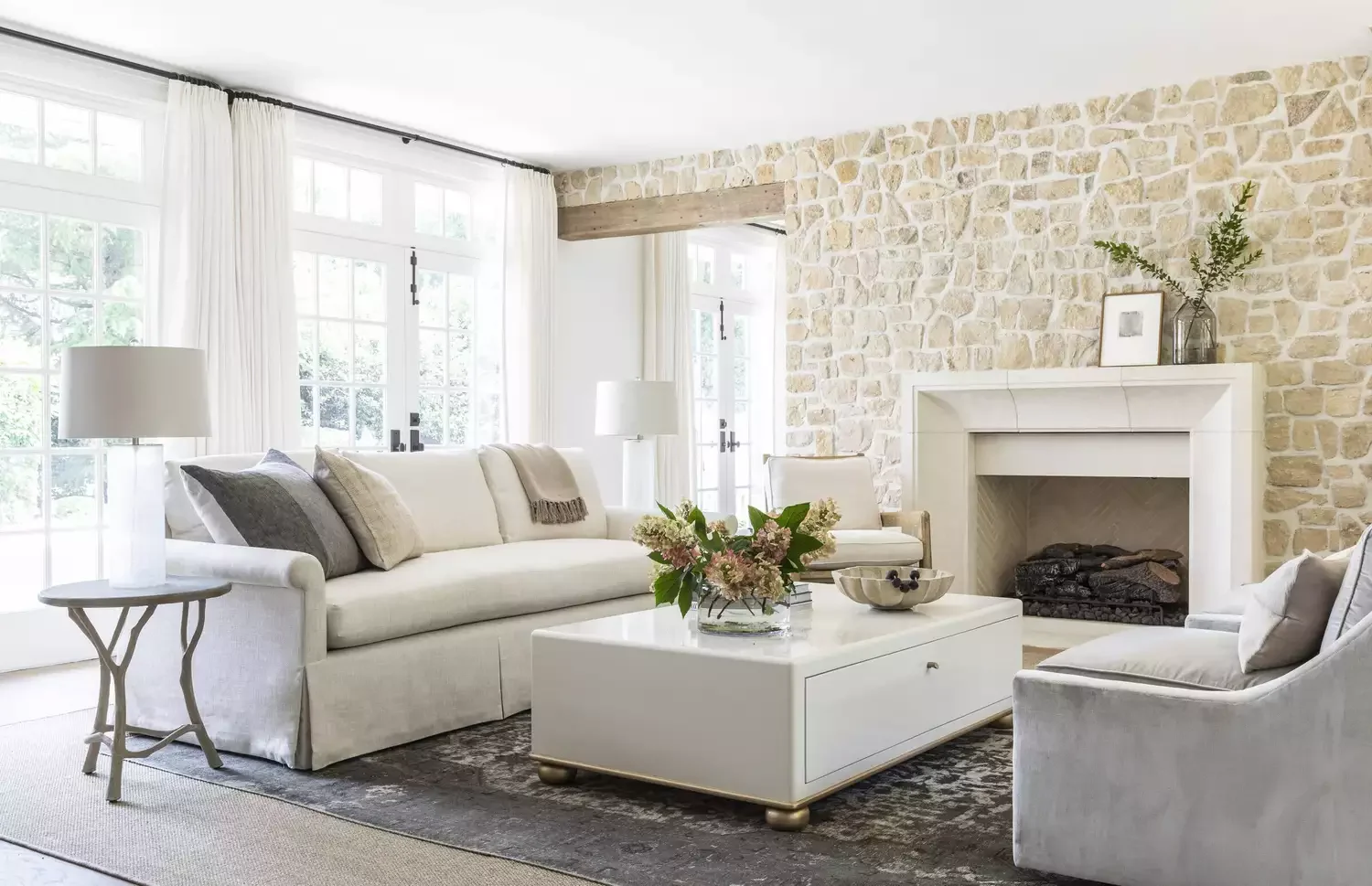
Credit: Design by Marie Flanigan Interiors / Photo by Julie Soefer
You can add incredible texture and visual interest by layering two different rugs together.
Place a smaller patterned rug in neutral tones over a larger solid flat-weave base. This layering technique creates depth and dimension while keeping your color palette cohesive and sophisticated.
12. Embrace Monochromatic White Schemes
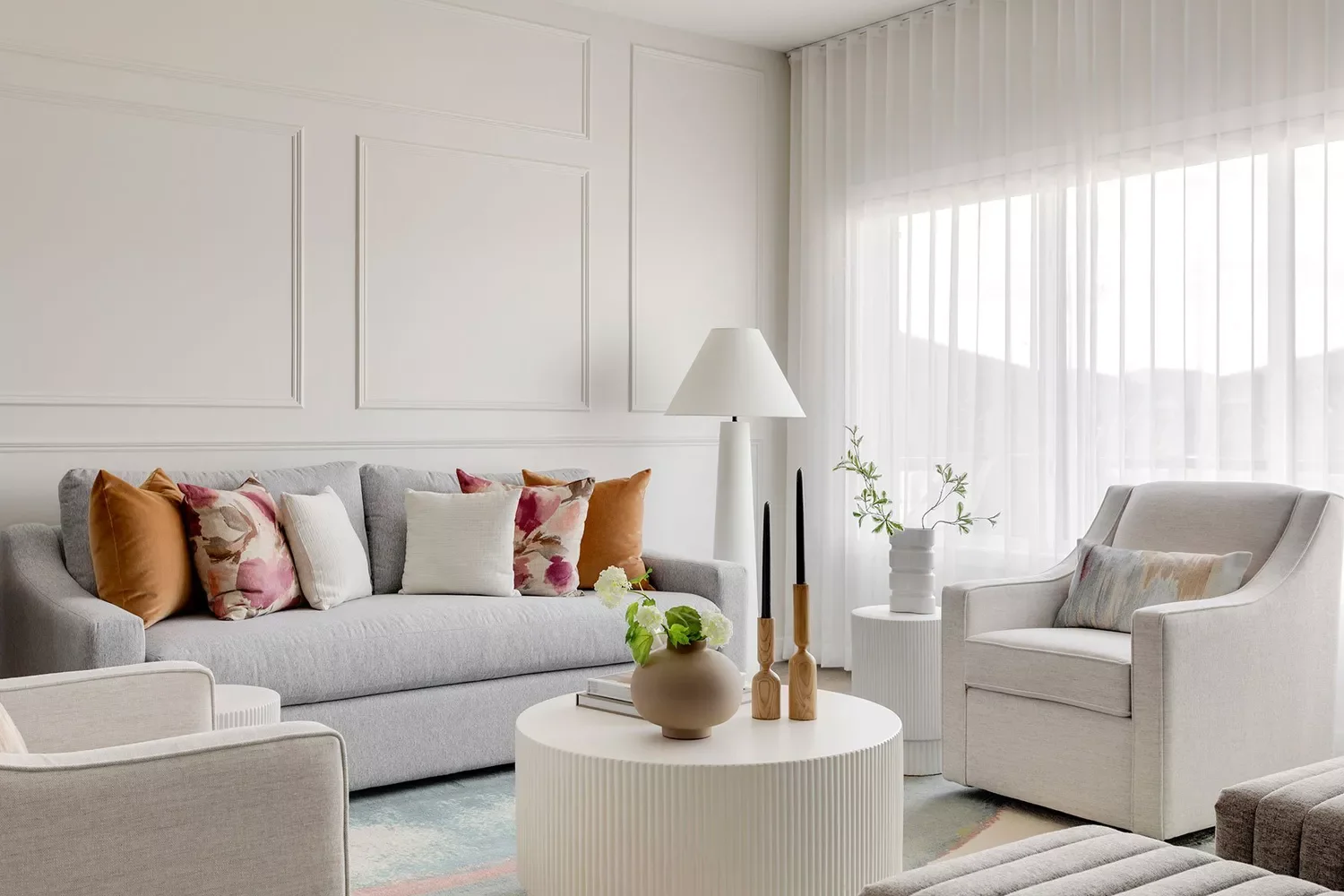
Credit: Louis Duncan-He Designs
You’ll be amazed how white-on-white creates dimension without any renovation required.
Paint your walls and trim in matching white tones, then add simple furniture and colorful accent pillows. This approach creates a light, airy foundation that lets your accessories and artwork shine.
13. Ground Your Space With Natural Jute Rugs
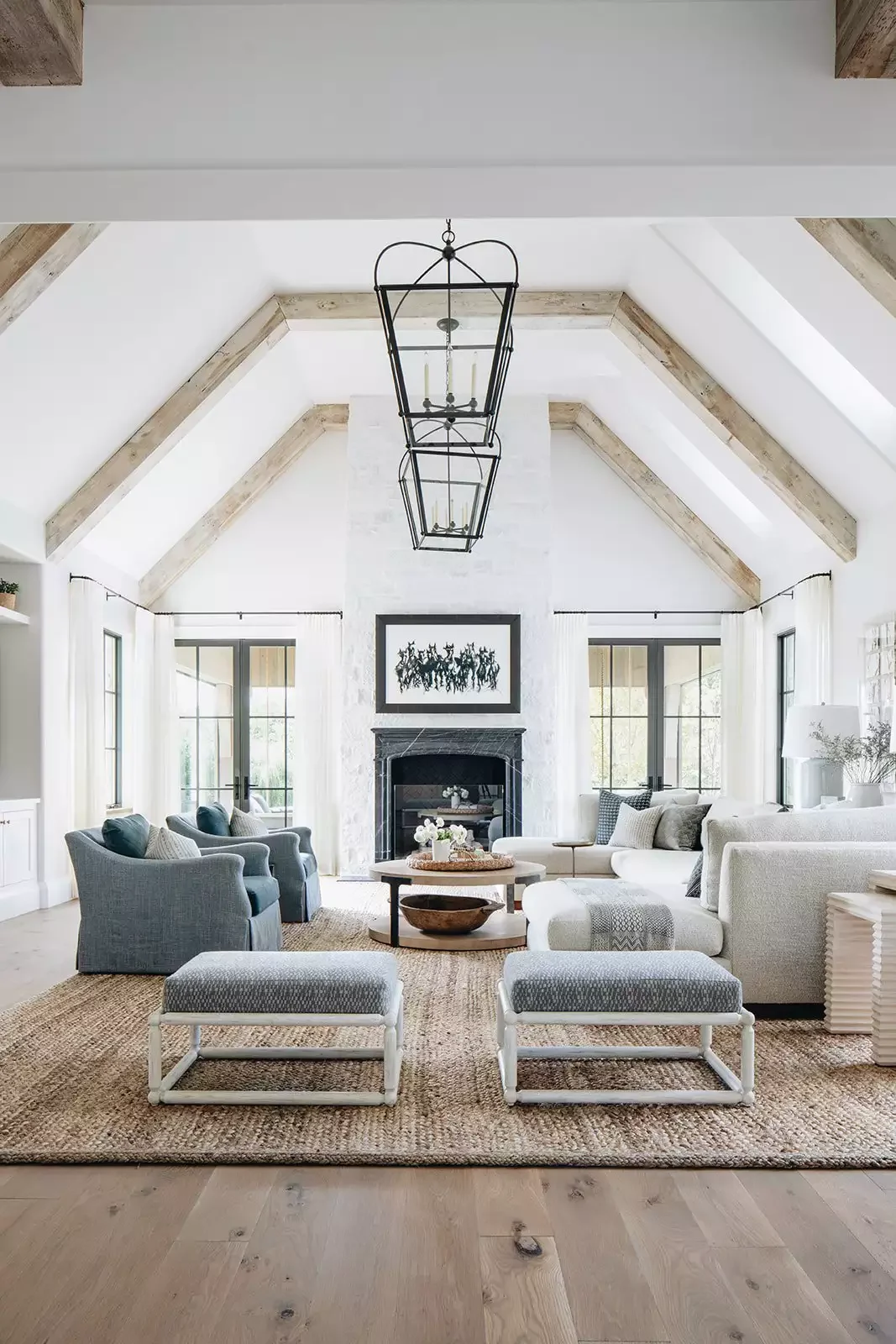
Credit: Kate Marker Interiors
A large jute rug perfectly bridges the gap between traditional and modern aesthetics in your room.
These affordable natural fiber rugs complement soft blue and white color schemes beautifully. Plus, they echo other organic elements like wooden ceiling beams and hardwood floors throughout your space.
14. Blend Antique Pieces With Modern Elements
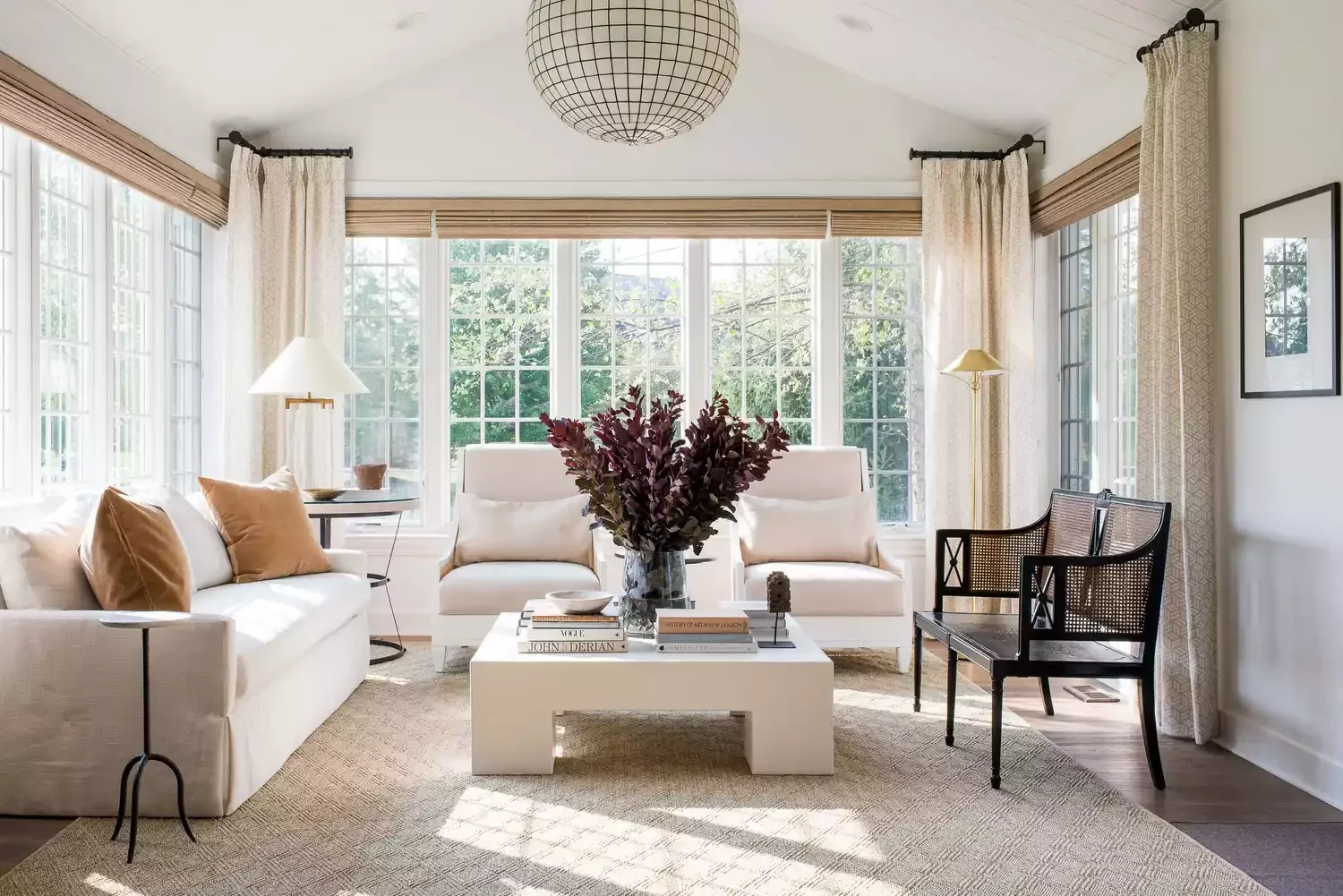
Credit: Whittney Parkinson Design
You can successfully mix furniture from different eras by keeping contrast levels low and harmonious.
Unite traditional furniture forms with contemporary upholstery using soft neutral color palettes. This approach creates visual cohesion while adding the collected-over-time look that makes spaces feel authentically personal.
15. Add Personality Through Colorful Textiles
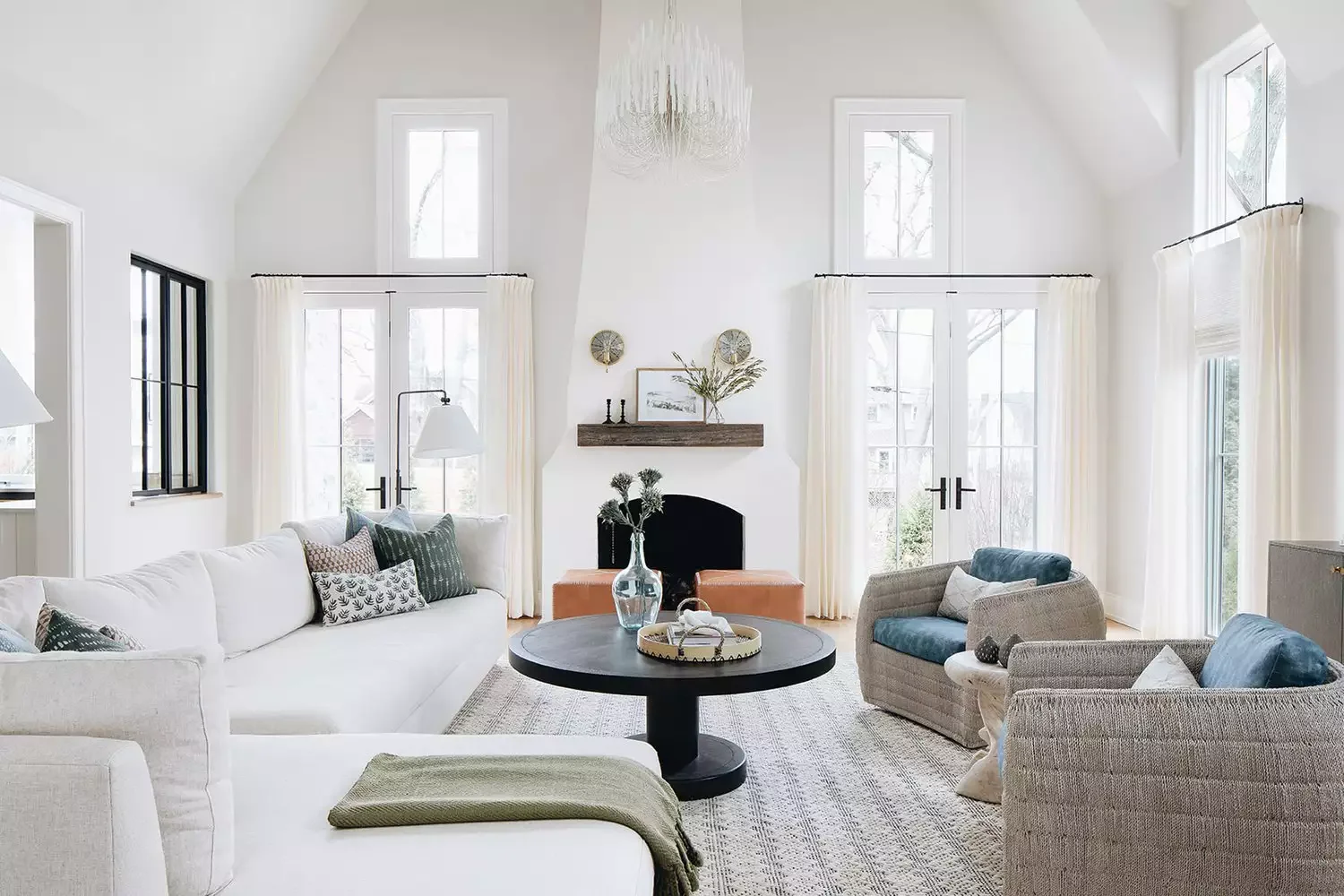
Credit: Kate Marker Interiors
Your neutral room comes to life when you introduce carefully chosen pops of color through fabrics.
Try adding blue and cognac leather accents through throw pillows or floor poufs. These warm touches help ground light, airy spaces while maintaining that sophisticated transitional aesthetic you’re creating.
16. Experiment With Deeper, Moodier Colors
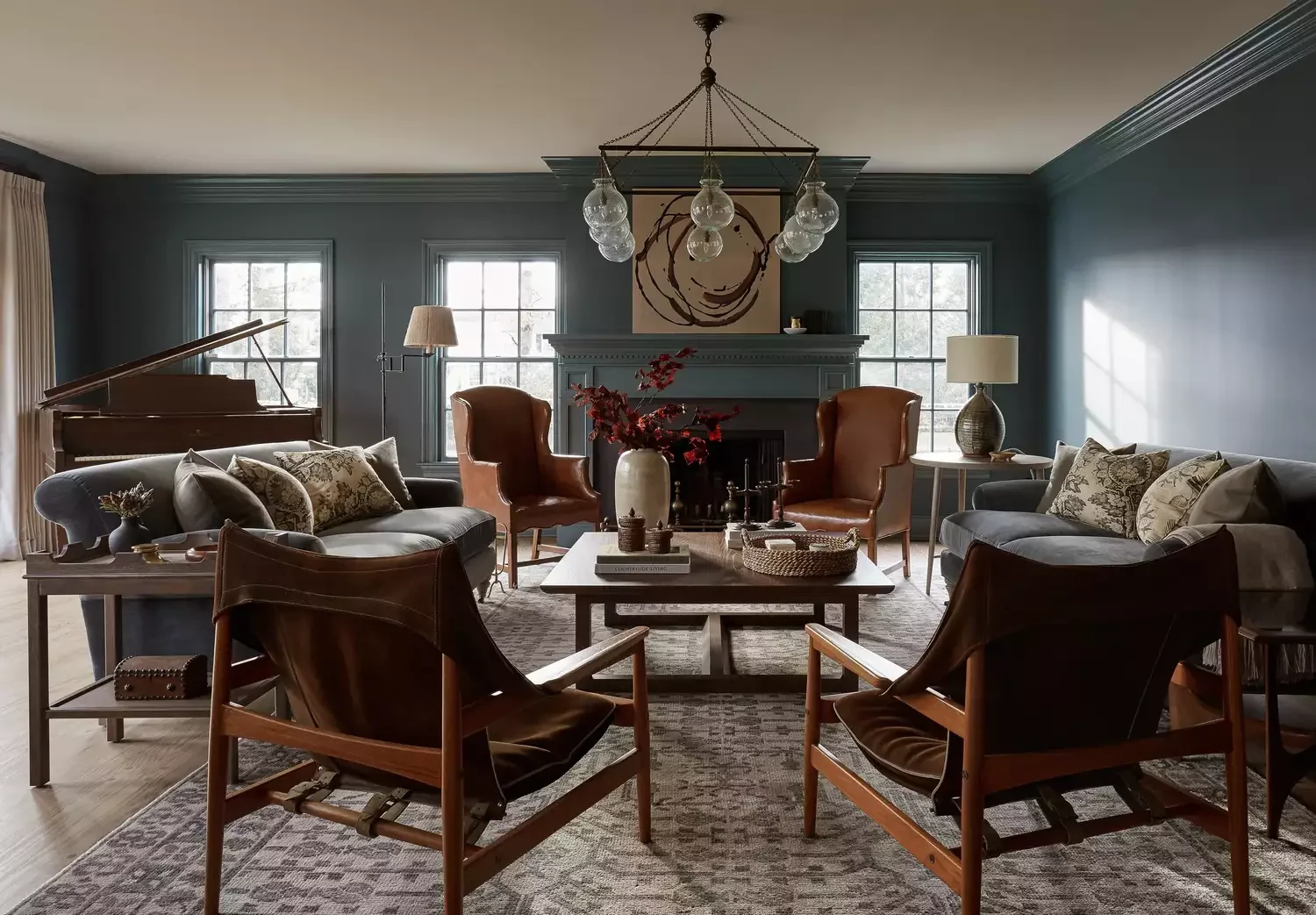
Credit: Becca Interiors
You don’t have to stick with light neutrals if you prefer more dramatic, sophisticated spaces.
Consider smoky blue walls paired with matching velvet sofas and warm wood tones. Add modern lighting fixtures to keep the overall feel fresh and contemporary rather than heavy or traditional.
17. Install Elegant Arched Built-In Storage
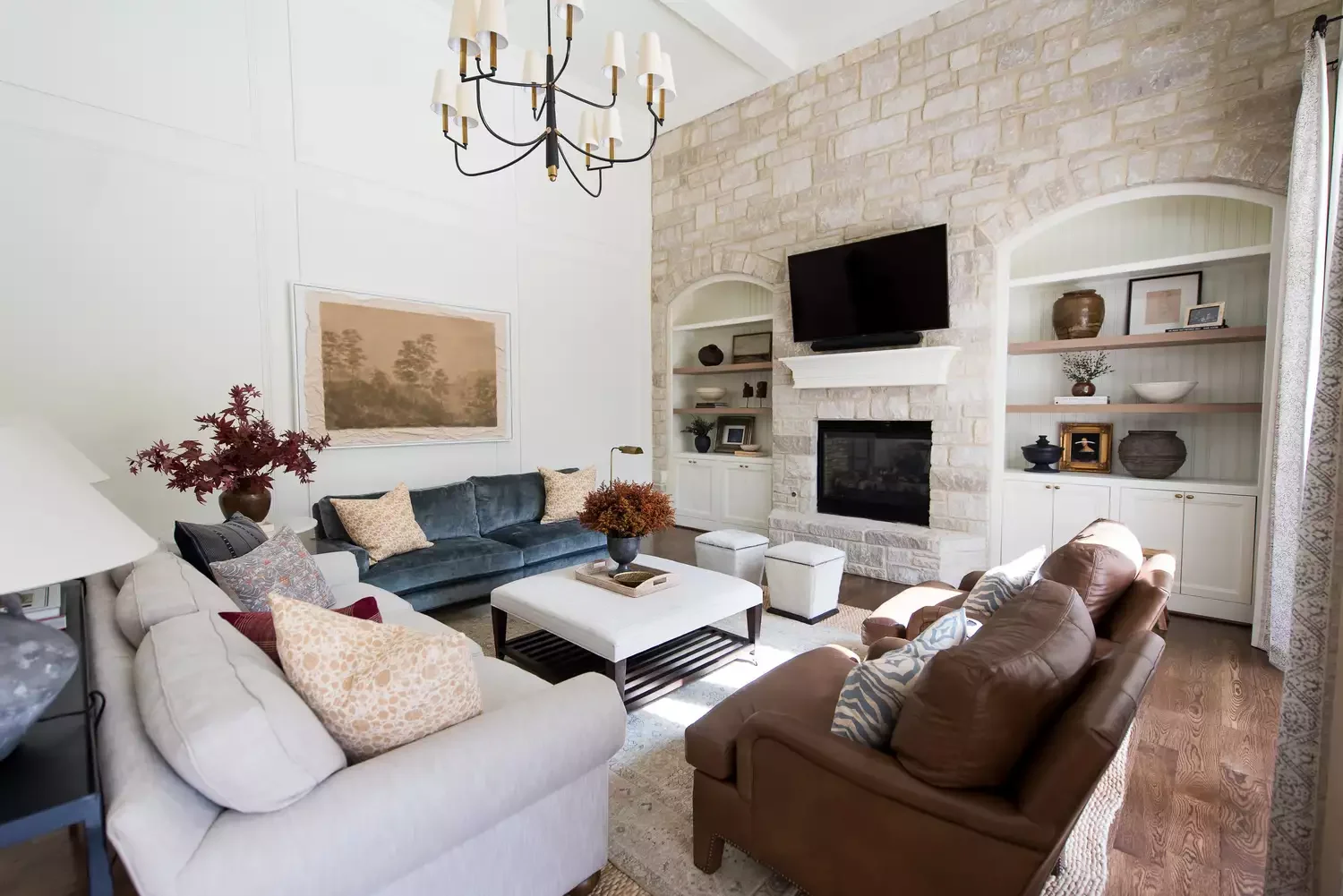
Credit: Whittney Parkinson Design
Arched built-ins flanking your fireplace create beautiful symmetry and valuable storage space.
Paint them in crisp white to complement natural stone fireplace walls. These architectural elements add a homey, custom feel that leans slightly traditional while maintaining clean, transitional lines throughout.
18. Keep Color Contrasts Soft and Harmonious
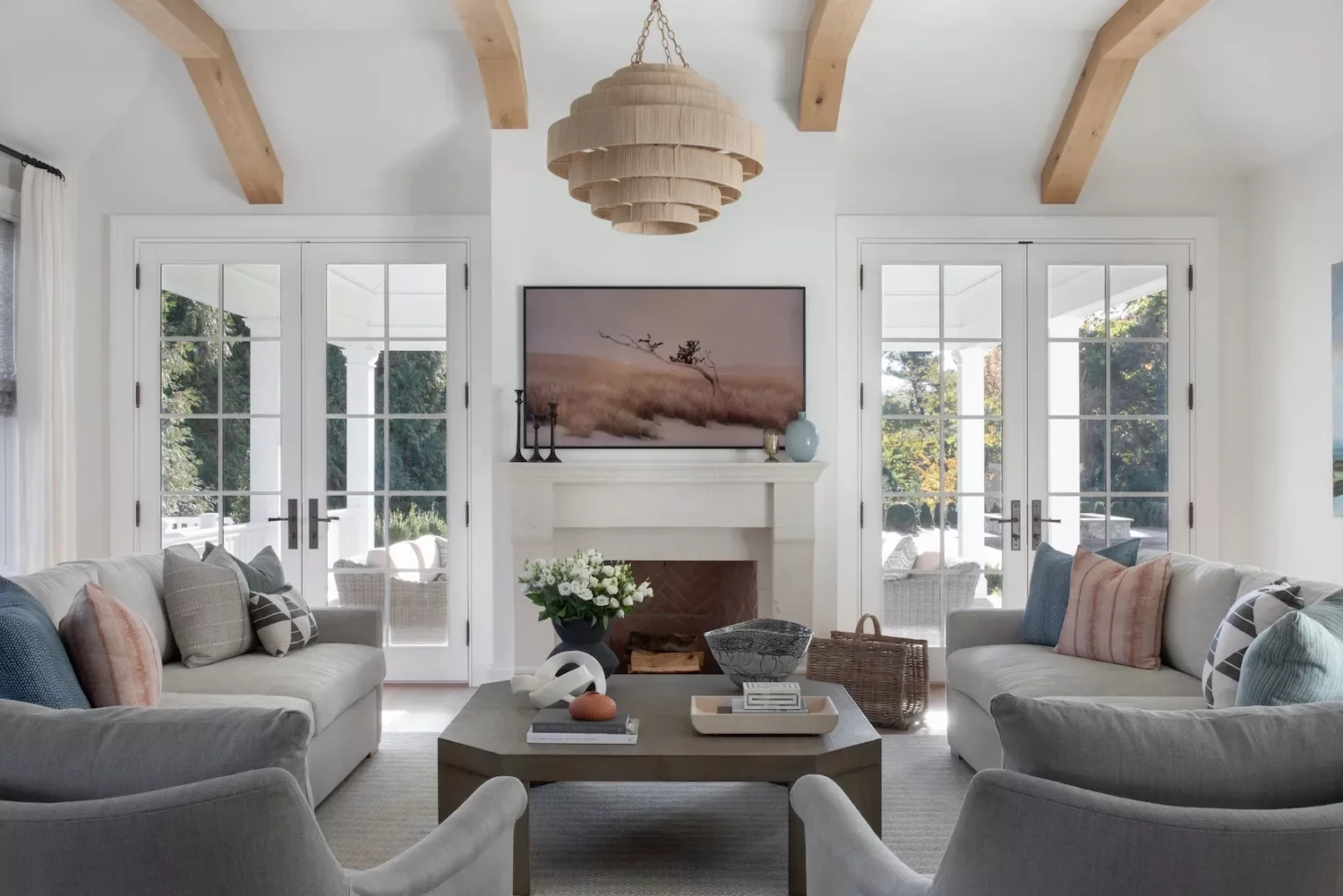
Credit: Britt Design Studio
Your room will feel more serene when you choose coordinated accent colors rather than bold contrasts.
Stick to soft shades of dusty pink and blue in throw pillows and decorative objects. This approach creates a harmonious, sophisticated atmosphere that’s both calming and visually interesting.
19. Work With Existing Rustic Architectural Features

Credit: Becca Interiors
You can successfully blend rustic elements like stone fireplaces with transitional decor for elevated comfort.
Use white paint, natural wood accents, and earth-toned furniture to create balance. This combination maintains a relaxed, comfortable feel while keeping the overall aesthetic polished and sophisticated.
20. Create Drama With Large Statement Mirrors
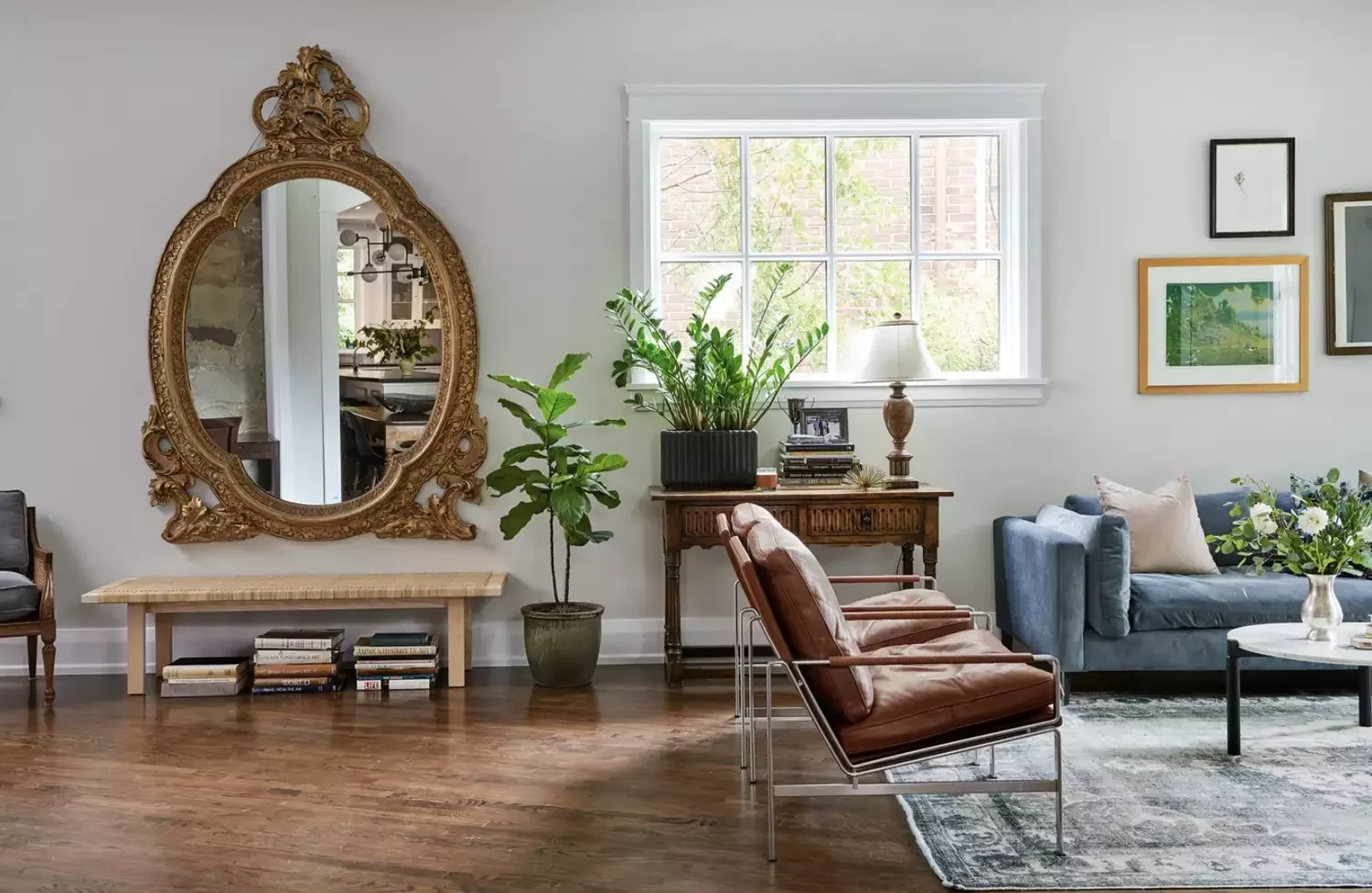
Credit: Ashley Montgomery Design
A large antique mirror becomes the perfect focal point in living rooms without fireplaces.
Mix antique and modern furniture pieces around this central element for visual balance. This approach creates warmth and character while maintaining that effortless, collected-over-time feel that defines great transitional design.
21. Ensure Design Flow Throughout Your Home
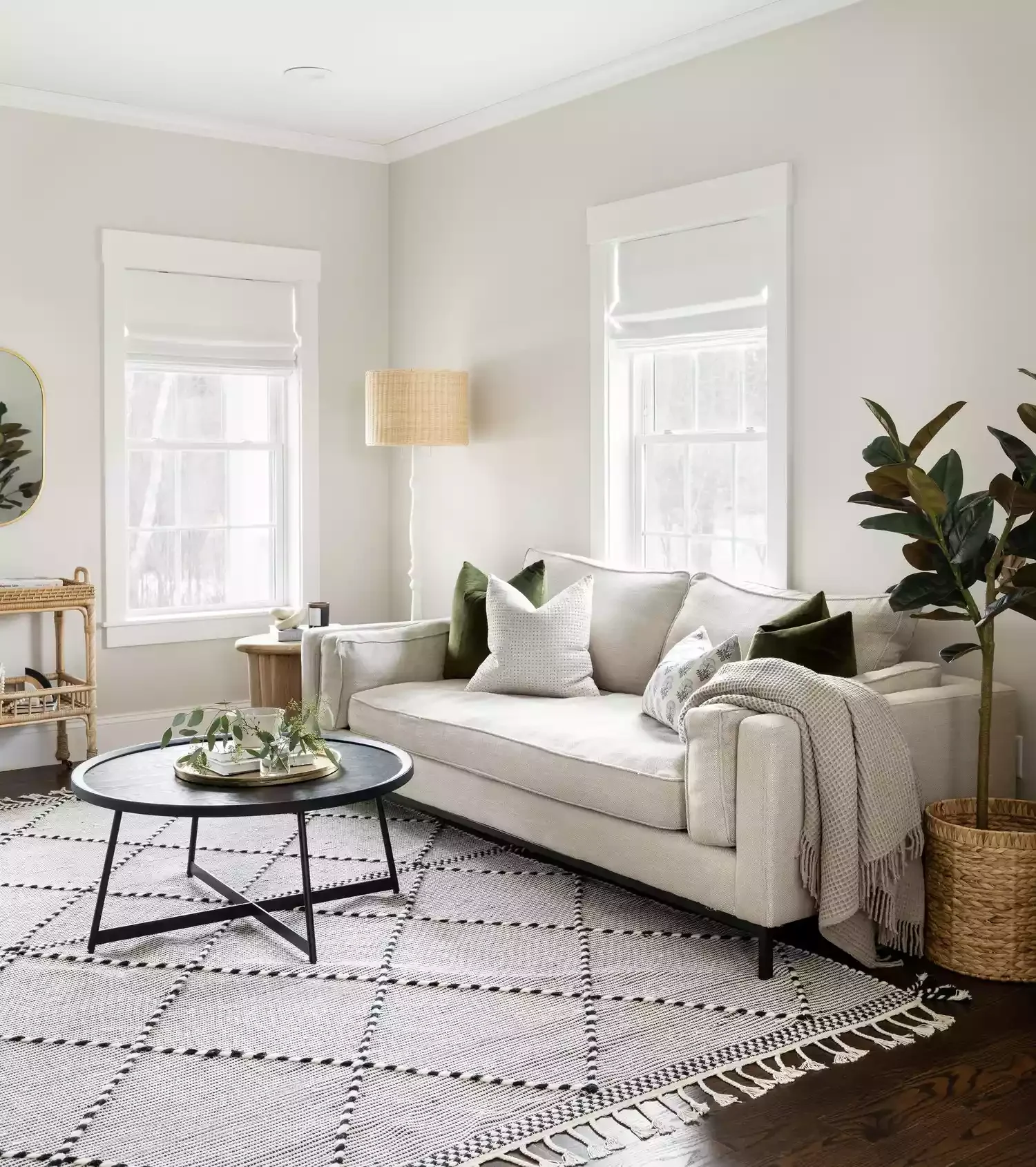
Credit: Desiree Burns Interiors
Your transitional living room should feel connected to adjacent spaces for true design cohesion.
Use consistent neutral tones and blend classic with modern elements throughout your home. This approach creates a sense of continuity that makes your entire space feel intentionally designed and sophisticated.
22. Update Traditional Rooms With Transitional Elements
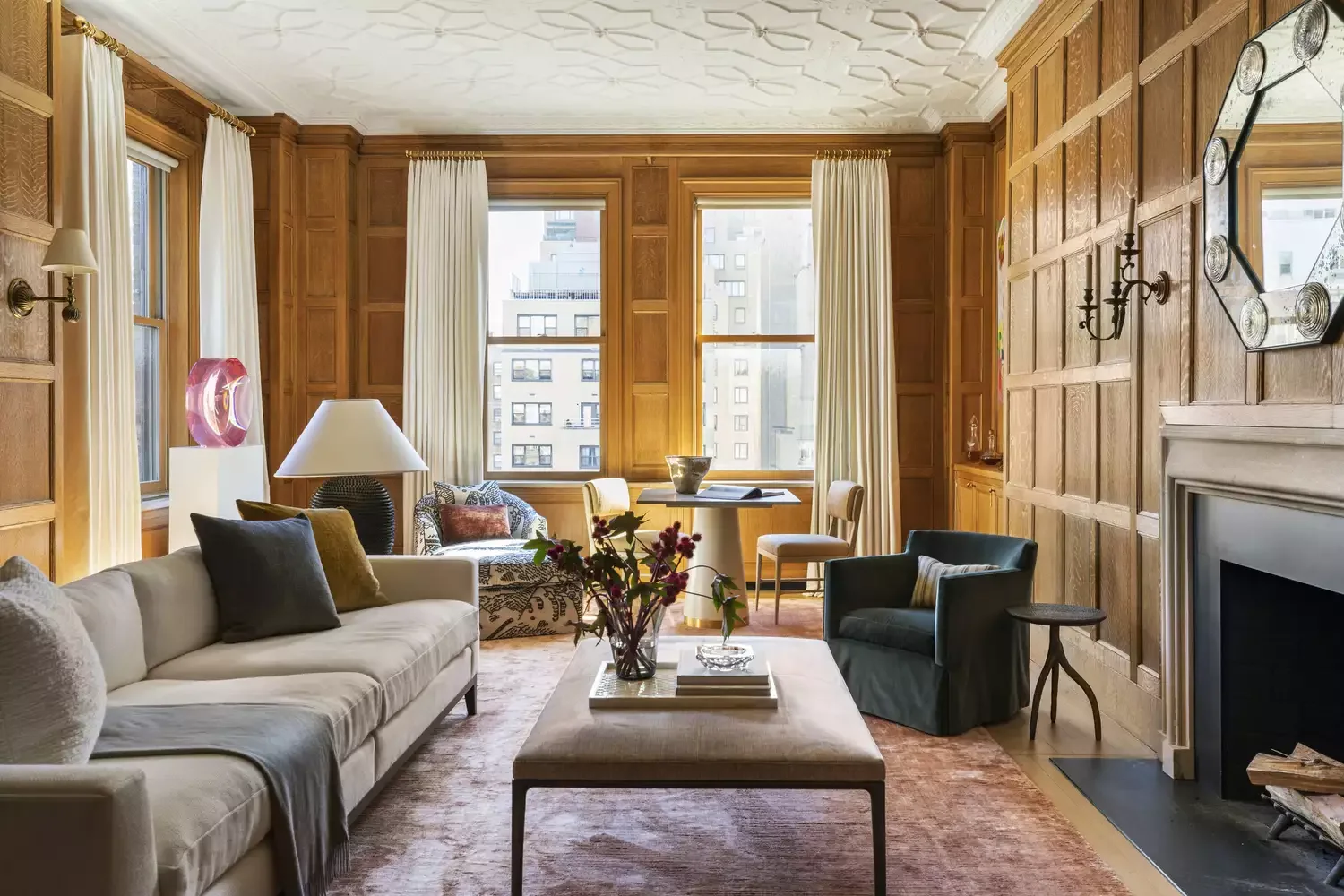
Credit: Design by Marie Flanigan Interiors / Photo by Julie Soefer
You can easily modernize traditional spaces by lightening dark wood paneling and adding contemporary ceiling treatments.
This approach works particularly well in older homes or apartments with existing architectural character. The result feels timeless rather than dated while maintaining those classic proportions.
23. Personalize With Coastal-Inspired Touches
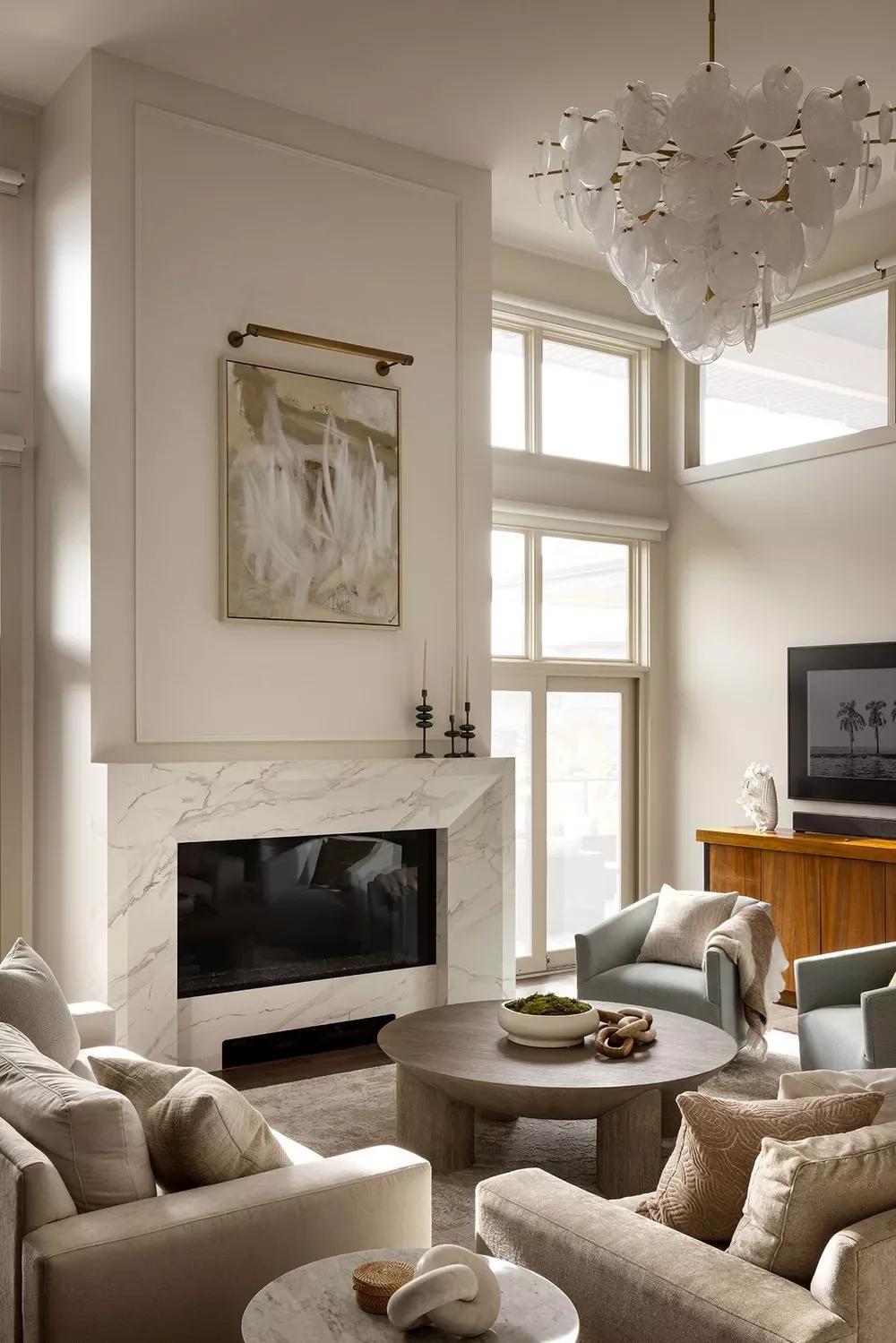
Credit: Louis Duncan-He Designs
Coastal elements add personality to your transitional living room without overwhelming the sophisticated aesthetic.
Incorporate ocean-themed artwork and hints of pale blue and sandy brown in your upholstery choices. These subtle nods to seaside living create a relaxed, vacation-like atmosphere year-round.
24. Energize Neutral Spaces With Bold Accent Colors
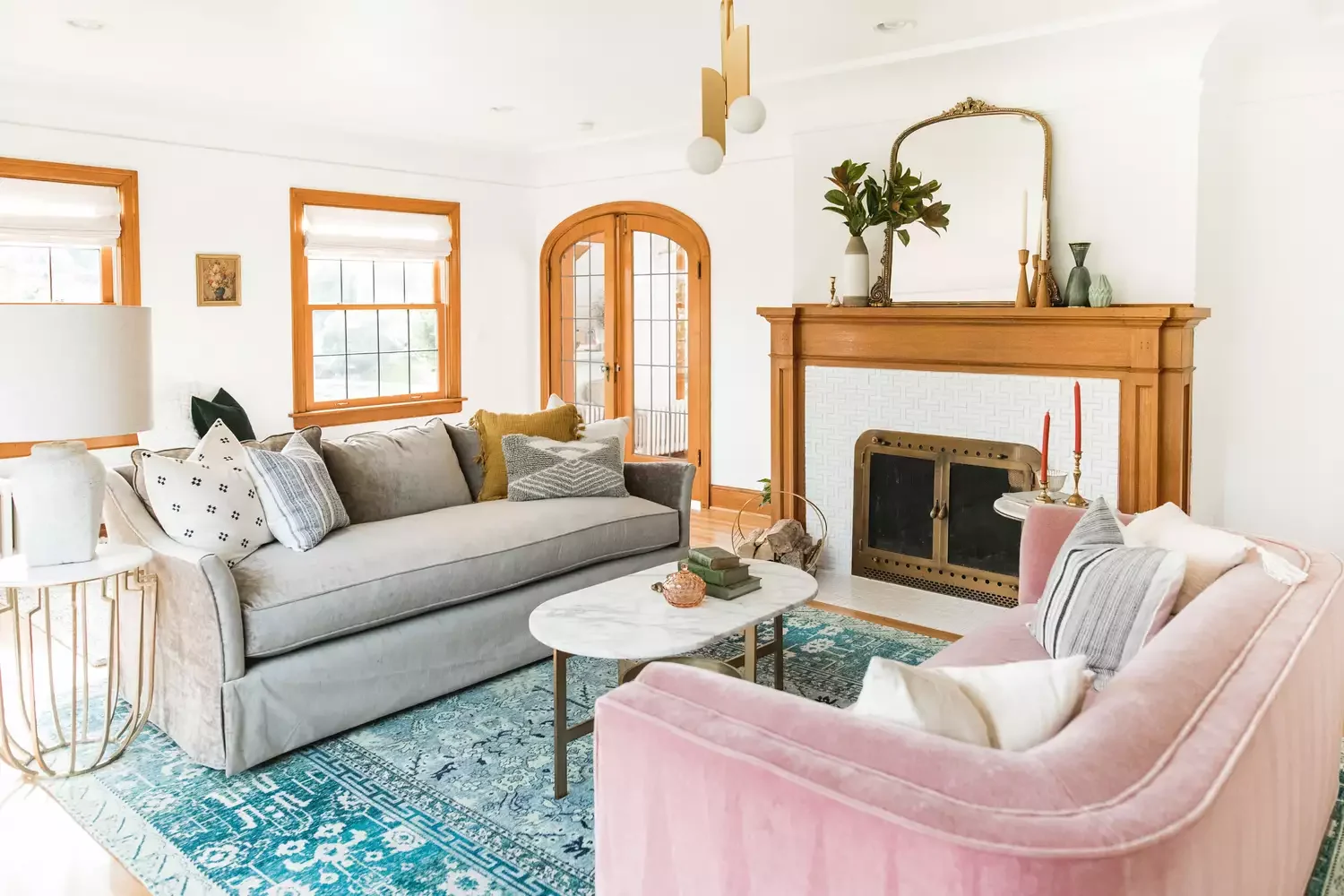
Credit: Jessica Nelson Design / Carina Skrobecki Photography
You can break free from strict neutrality by adding a few carefully chosen pops of vibrant color.
Try a vintage blue area rug paired with a soft pink upholstered sofa for unexpected charm. These bolder choices energize your space while maintaining that sophisticated transitional foundation.
25. Perfect the Art of Formal Transitional Design
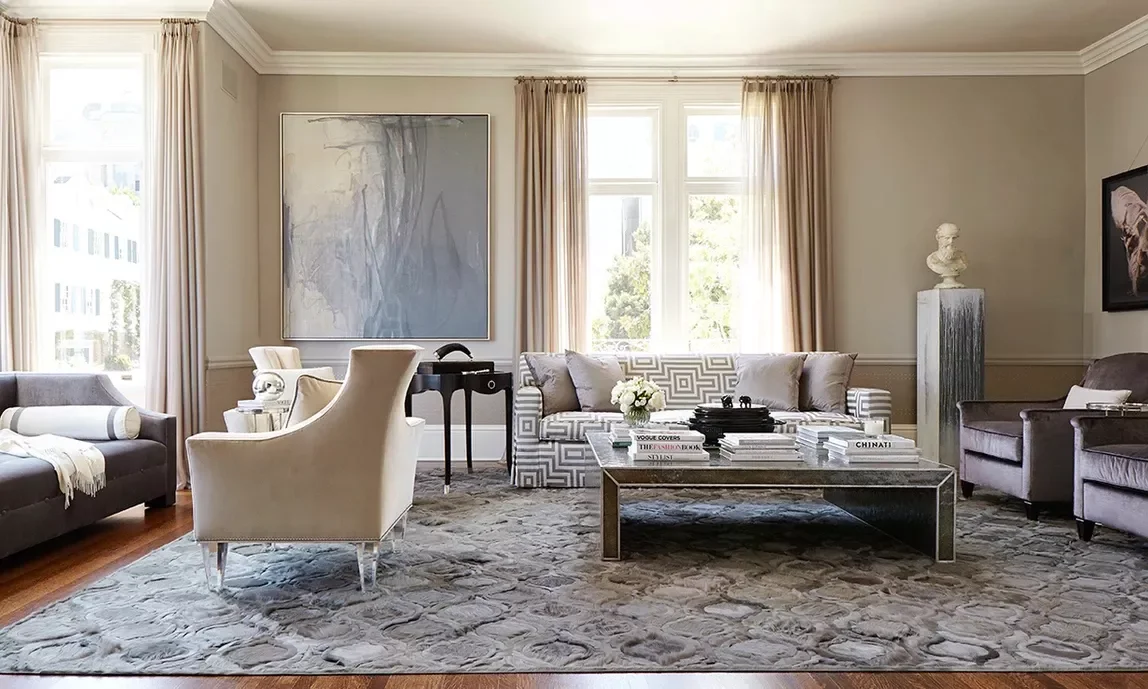
Credit: Kendall Wilkinson Design
Your formal living room achieves timeless elegance when you mix classic furniture lines with fresh upholstery.
Add modern artwork or contemporary wall decor to keep the space feeling current and livable. This approach prevents formal rooms from feeling stuffy while maintaining appropriate sophistication.
Final Thoughts
You now have all the tools to create a stunning transitional living room that perfectly balances classic elegance with modern comfort.
Remember that successful transitional design is all about finding harmony between opposing elements – old and new, formal and casual, traditional and contemporary.
Start with a neutral foundation, layer in different textures, and don’t be afraid to mix furniture styles to create a space that truly reflects your personal style.